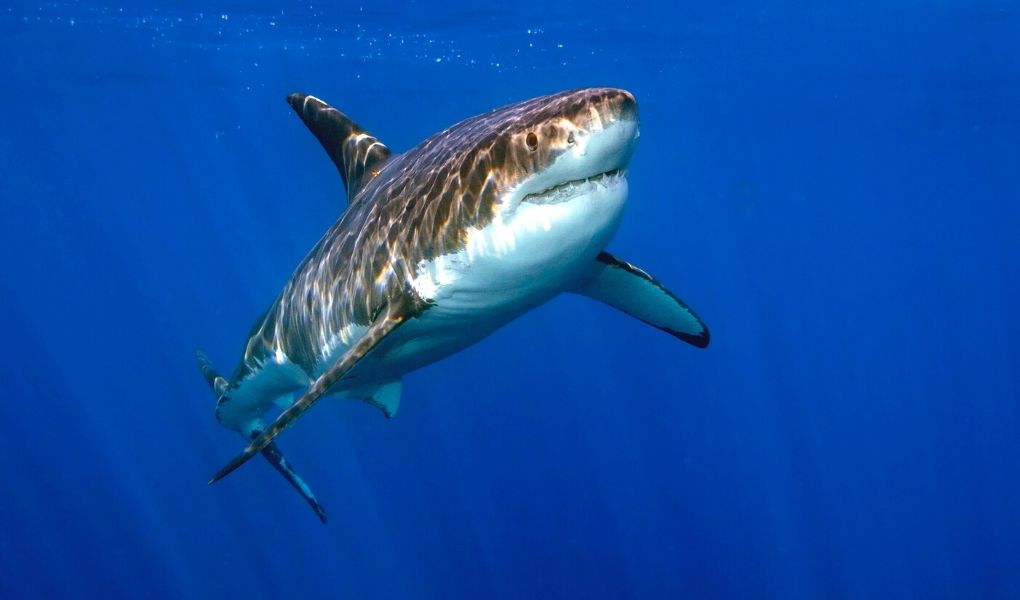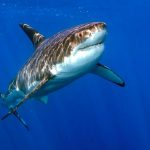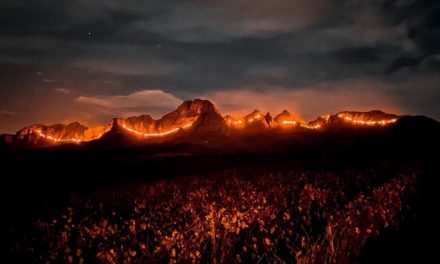Fatal shark attack
in South Africa
A great white shark that killed a swimmer off the coast of South Africa on Tuesday was apparently filmed swimming near the shore just minutes after the attack.
The National Sea Rescue Institute (NSRI) advised that the SRI Plettenberg Bay duty crew was activated after eyewitnesses reported a shark incident at Sanctuary Beach on the Robberg side of Robberg 5 in Plettenberg Bay.
NSRI lifeguards were immediately on the scene, and 2 NSRI lifeboats were launched. Unfortunately, the body of an adult male, believed to be a local, was found on arrival at the location and recovered from the water at the back surf line onto an NSRI lifeboat. Fatally, the injuries were fatal, and the doctor pronounced the man dead.
The NSRI and Bitou Municipality appealed to marine users – bathers, paddlers, sailors and boaters – in Plettenberg Bay and along the Southern Cape coast to exercise caution following this fatal incident.
According to NEWSWEEK.COM, great white sharks are frequently sighted off South African waters, although their numbers have declined in recent years.
MORE ABOUT GREAT WHITE SHARKS
They can grow up to 20 feet long, and the largest fish ever caught weighed 5,000 pounds (about 2,268 kilograms). Great white sharks stay close to areas with large prey populations, especially Cape fur seals off the South African coast. They stalk young seals from deeper waters, preferring individual or smaller groups of these mammals.
Attacks on humans are rare, and fatal attacks are occasional still.
Last year, 73 people were attacked without cause, of which only nine were killed. Three attacks and one of the fatalities took place in South Africa. The last fatality off the coast of South Africa occurred earlier this year.
WHITE SHARKS IN SOUTH AFRICA: WHAT YOU SHOULD KNOW
When are the shark watchers’ busiest?
Shark spotters are on duty all year round, although the summer months are busier because more people are in the water. The Shark Spotters programme operates year-round at four beaches in the Western Cape (Fishhoek, Muizenberg Kalk Bay, Kogel Bay) and sometimes at six beaches (Monwabisi, Cloveli).
It depends on the region, but we usually see sharks closer to shore in spring and summer. In winter, they feed on baby seals because baby seals are.
What should you do if you see a shark?
Stay calm, get out of the water as quickly as possible and notify local lifeguards or shark spotters if there are no lifeguards or shark spotters on duty.
What is the most crucial beach flag to know about for shark sightings?
A white flag with a black shark on it – this flag is used on all South African beaches to indicate that there is a shark in the water. However, you will usually hear a siren suggesting that you should get out of the water.
Are there other beach flags to be aware of?
Yes, the other flags you should be aware of when living in the Western Cape are the red, green and black flags. You can find the protocol here.

White flag (with a solid black shark): Shark near water users (siren sounds) or after a serious incident when the beach is closed.

Red flag (with white shark throughout): 1 hour after a sighting or when a shark is sighted but not near water users, or when there is an increased risk of shark activity.

Black flag (with shark outline): Poor sighting conditions in an area where most water users are. No shark seen.

Green flag (with shark outline): Good visibility conditions in the area where most water users are. No shark seen.
Is it true that tiburons eat humans?
According to Sarah Waries of the renowned Shark Spotters programme in Cape Town: «Humans are not part of their diet or their normal diet. Shark bites that do occur are very rarely predator bites. If sharks were out to eat humans, there would be many more incidents! While the number of shark bites is increasing worldwide, the number of deaths from shark bites has decreased thanks to the use of shark bite kits and better medical care».
Where are the NSRI shark bite kits kept?
Shark bite kits are kept at strategic locations in or near Table Bay, Strandfontein, Wilderness, Jeffreys Bay and Kei Mouth. In the Plettenberg Bay area, the kits are located at Robberg Beach, Central Beach, Keurbooms, Lookout Beach and Nature’s Valley.
Report at NEWSWEEK.com, of 29 June 2022 / More info: www.nsri.org.za / www.sharkspotters.org.za









